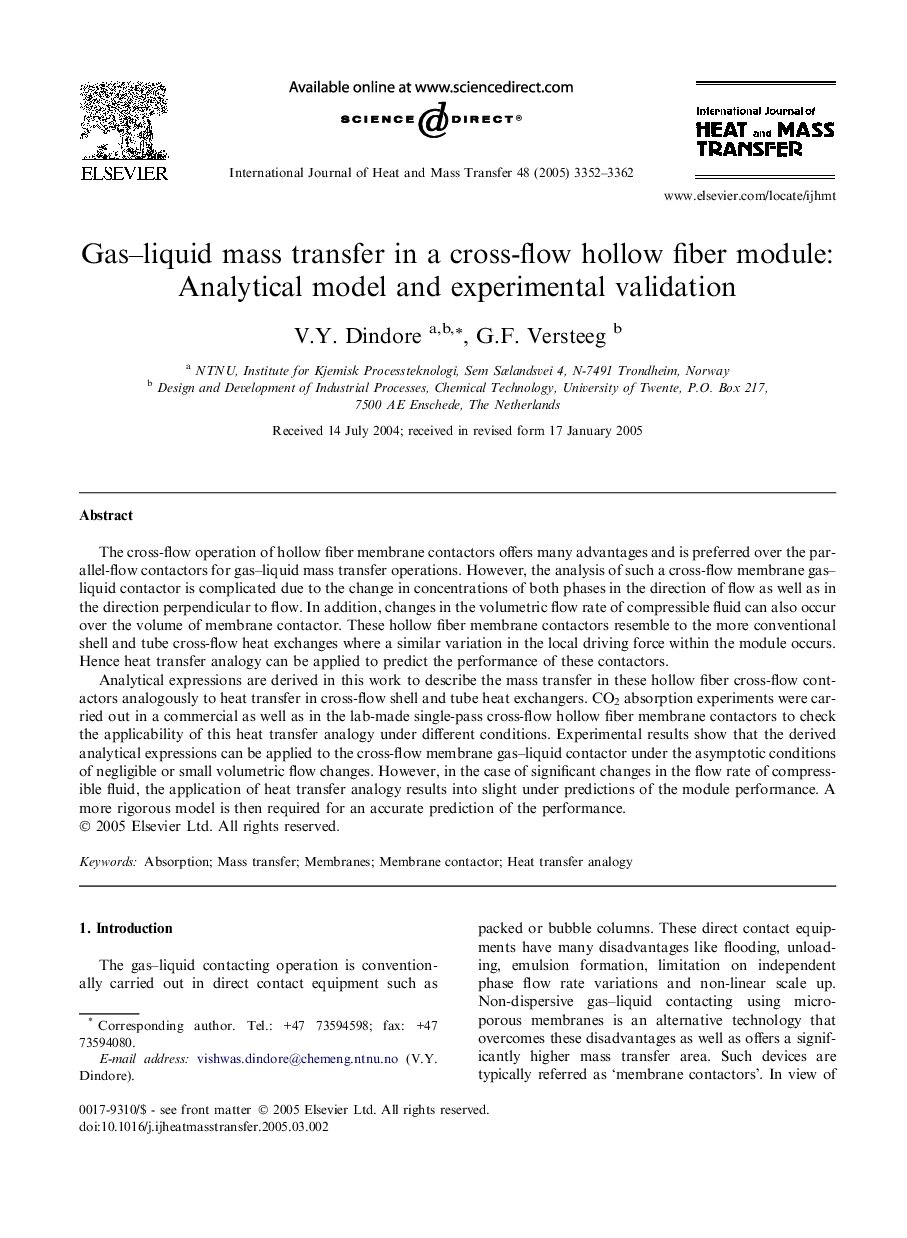| کد مقاله | کد نشریه | سال انتشار | مقاله انگلیسی | نسخه تمام متن |
|---|---|---|---|---|
| 662383 | 1458185 | 2005 | 11 صفحه PDF | دانلود رایگان |

The cross-flow operation of hollow fiber membrane contactors offers many advantages and is preferred over the parallel-flow contactors for gas–liquid mass transfer operations. However, the analysis of such a cross-flow membrane gas–liquid contactor is complicated due to the change in concentrations of both phases in the direction of flow as well as in the direction perpendicular to flow. In addition, changes in the volumetric flow rate of compressible fluid can also occur over the volume of membrane contactor. These hollow fiber membrane contactors resemble to the more conventional shell and tube cross-flow heat exchanges where a similar variation in the local driving force within the module occurs. Hence heat transfer analogy can be applied to predict the performance of these contactors.Analytical expressions are derived in this work to describe the mass transfer in these hollow fiber cross-flow contactors analogously to heat transfer in cross-flow shell and tube heat exchangers. CO2 absorption experiments were carried out in a commercial as well as in the lab-made single-pass cross-flow hollow fiber membrane contactors to check the applicability of this heat transfer analogy under different conditions. Experimental results show that the derived analytical expressions can be applied to the cross-flow membrane gas–liquid contactor under the asymptotic conditions of negligible or small volumetric flow changes. However, in the case of significant changes in the flow rate of compressible fluid, the application of heat transfer analogy results into slight under predictions of the module performance. A more rigorous model is then required for an accurate prediction of the performance.
Journal: International Journal of Heat and Mass Transfer - Volume 48, Issue 16, July 2005, Pages 3352–3362